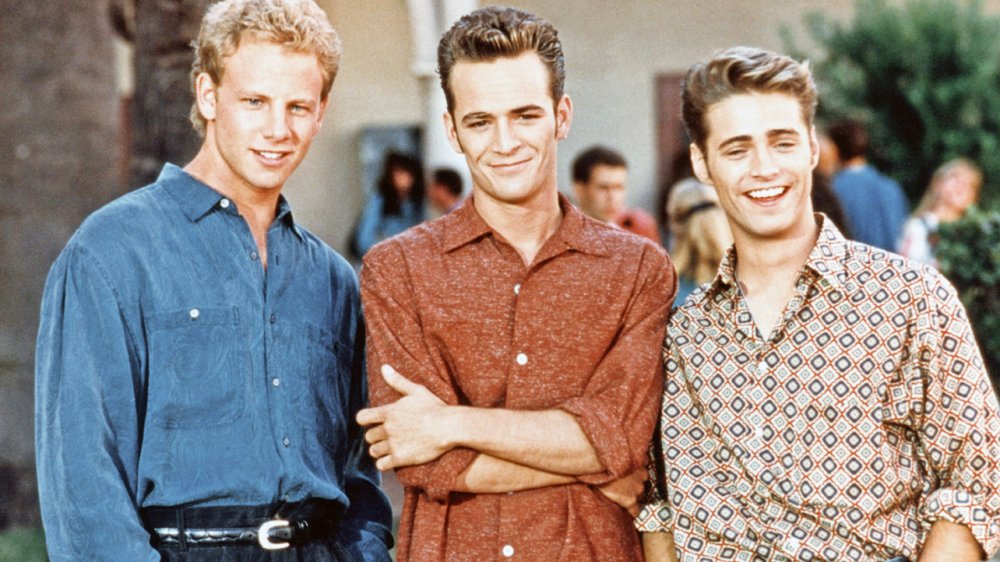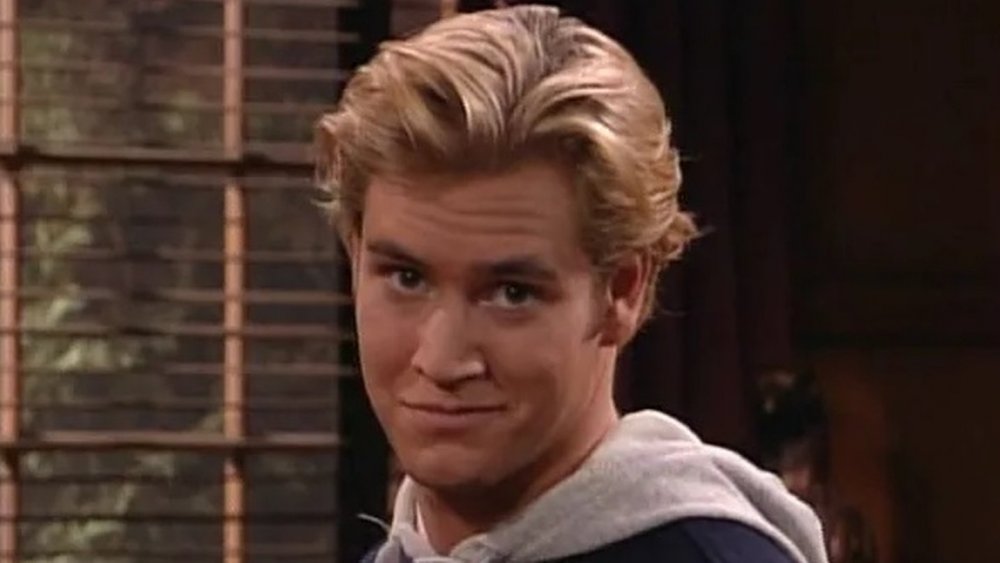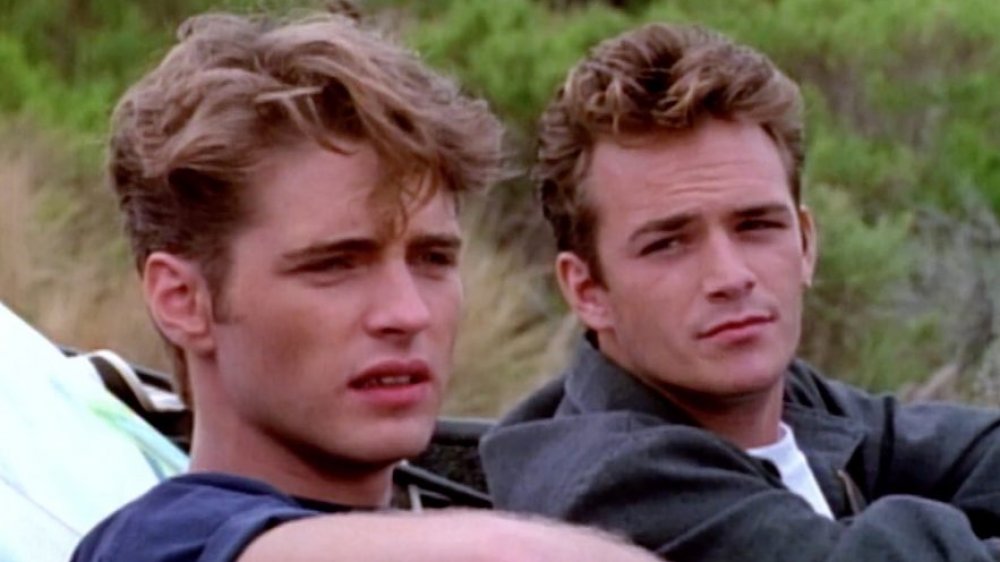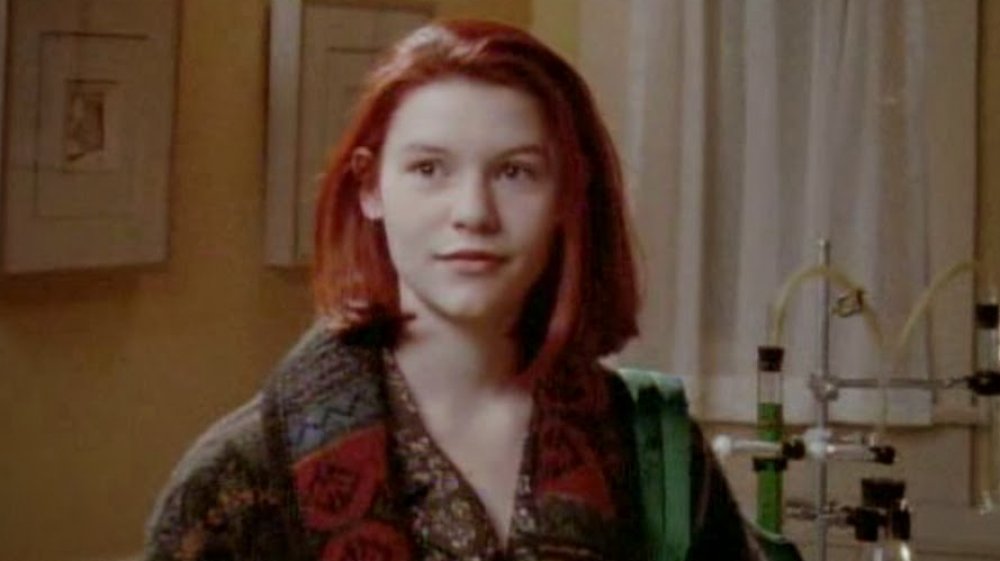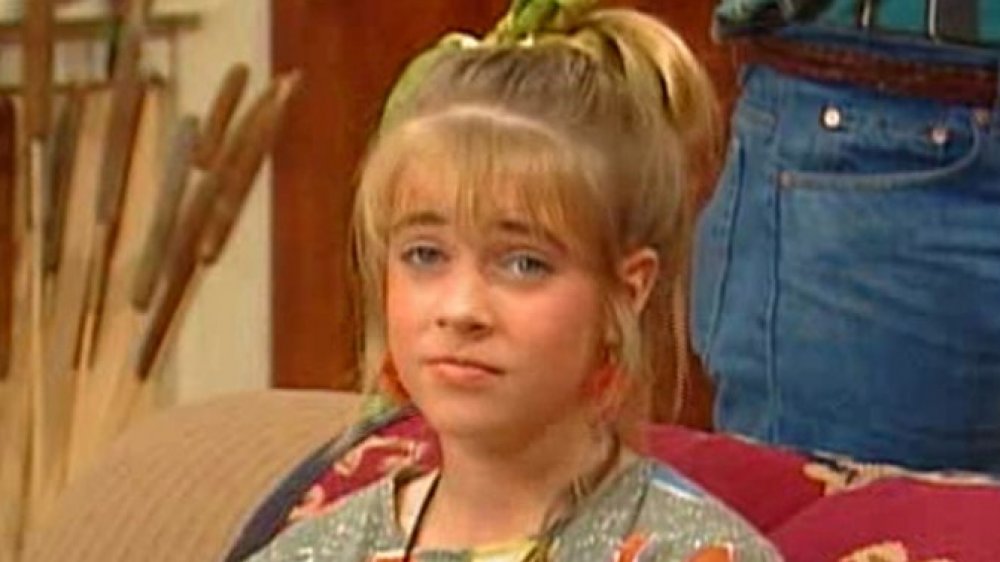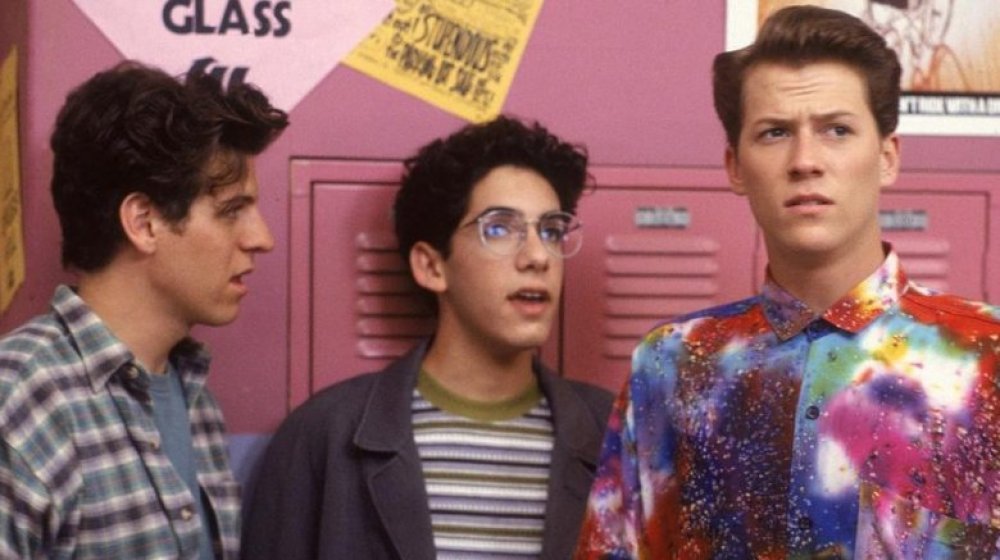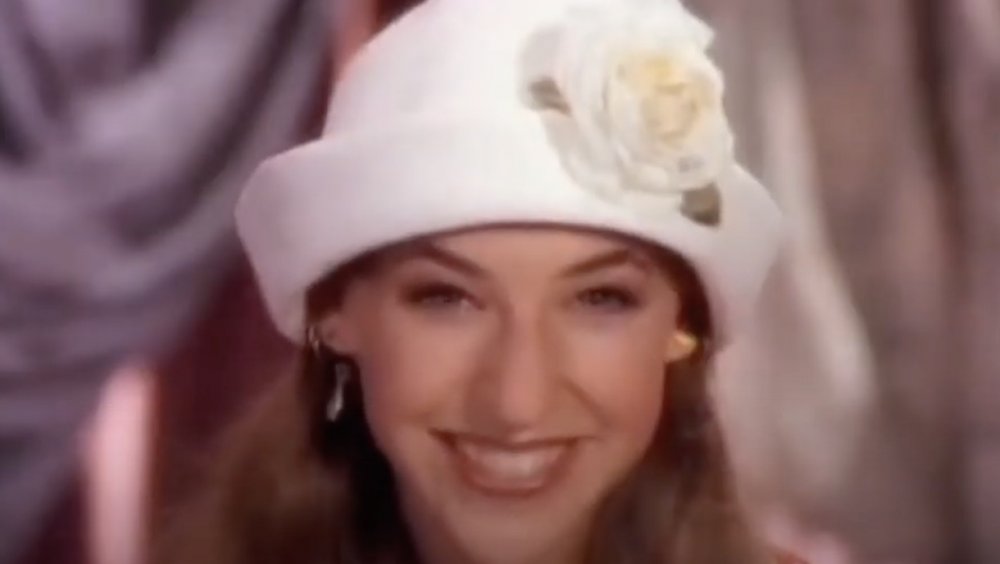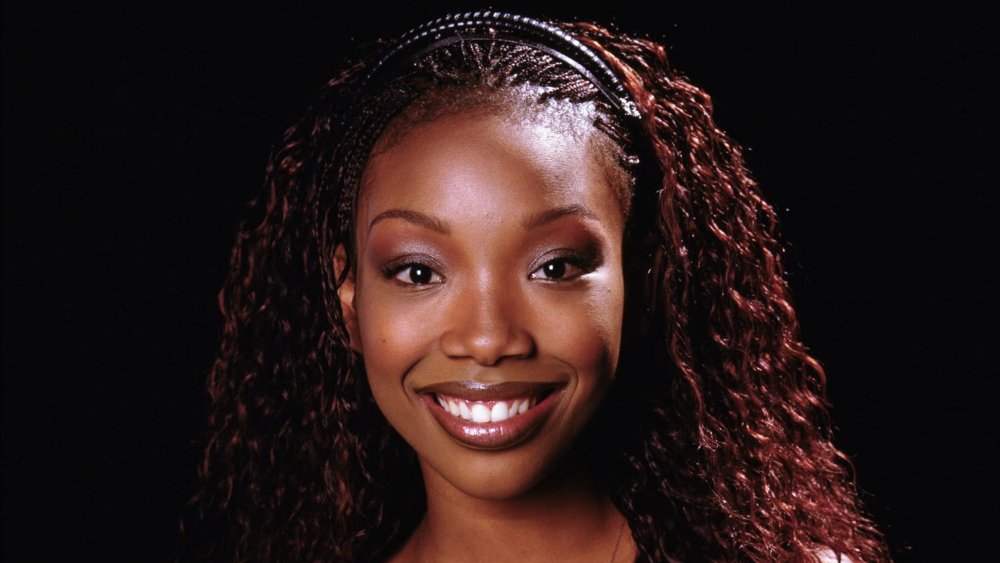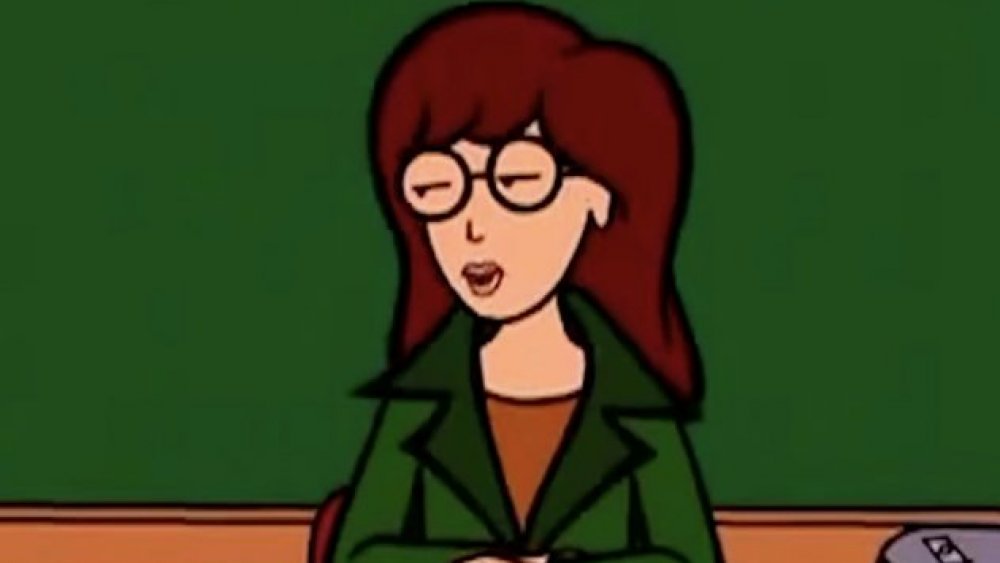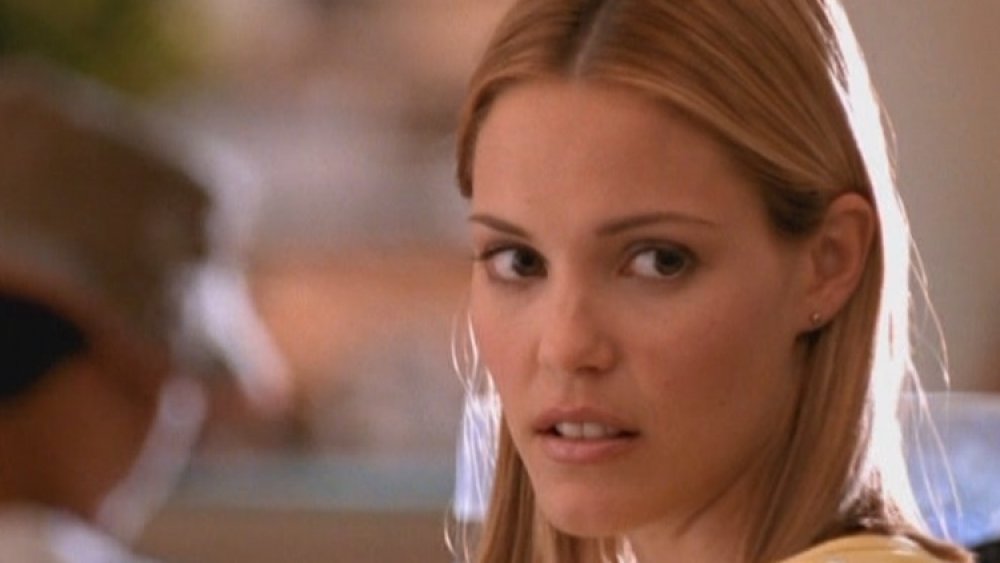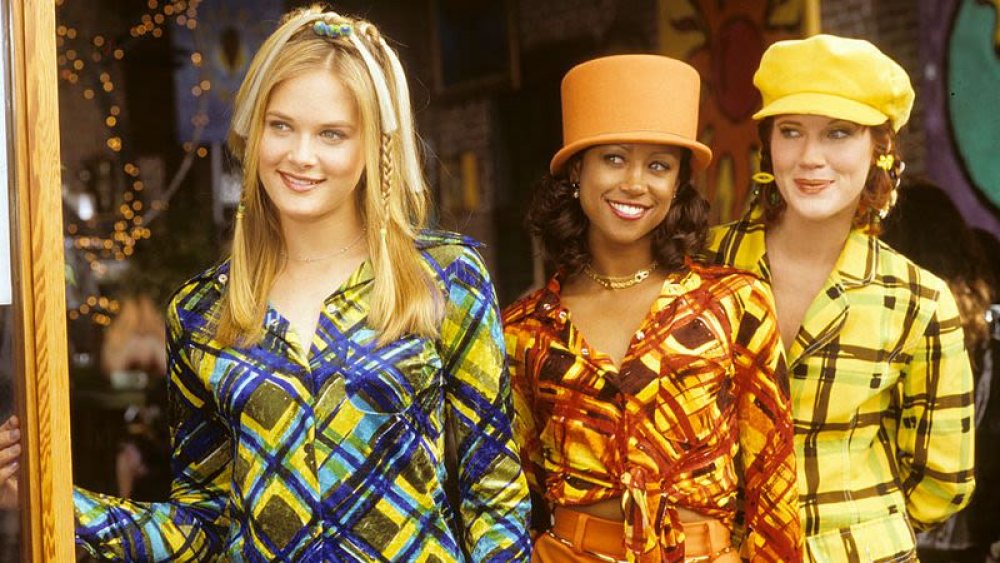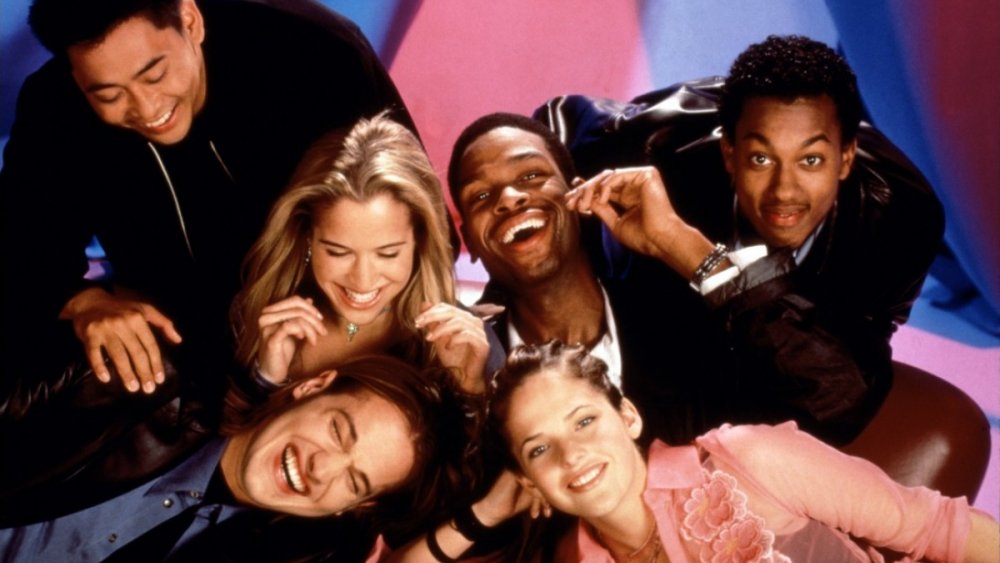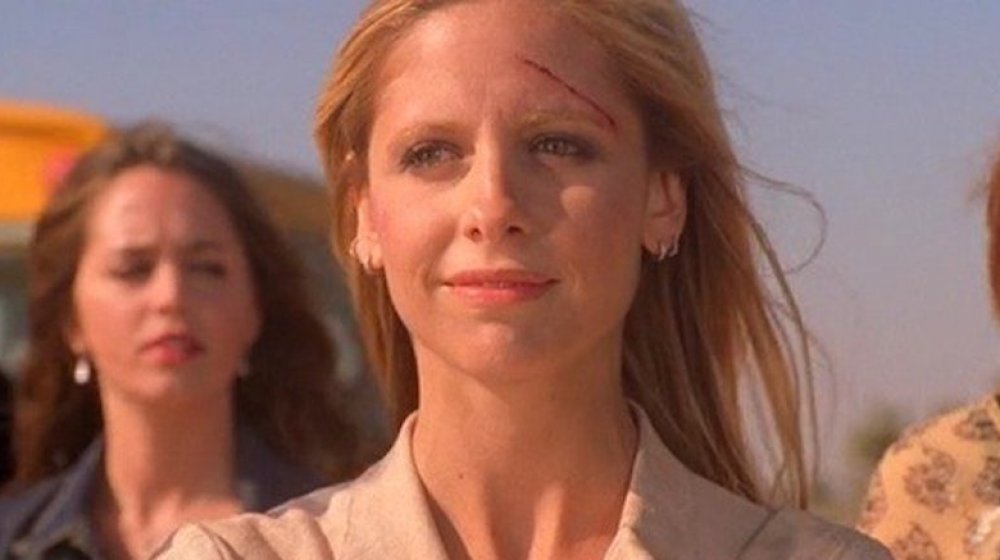The Real Reason These Popular '90s Teen Shows Were Canceled
Every generation of American teenagers has its own movies, music, and TV shows — stuff that becomes cultural touchstones if not influential classics in the decades that follow. Teens in the '60s teens had the Beatles, '80s teens had John Hughes movies, and '90s teens could be entertained by or empathize with the many characters their age who dominated television of the era. It was a golden age for teen TV, with sitcoms, soaps, dramas, cartoons, and even sci-fi exploring what it felt like to be not quite a kid while also not quite an adult.
But alas, youth is fleeting and so is youth-oriented television. Most TV shows don't last forever, and teen shows tend to come and go as quickly as its audience ages out of their target demographic. Here are the stories of some of the most popular shows about cool teenagers that aired in the 1990s — and the reasons they had to grow up, move on, and leave the airwaves.
Saved By the Bell didn't work outside of high school
A short-lived Disney Channel vehicle for former child star Hayley Mills about an Indiana teacher called Good Morning, Miss Bliss, this series was revamped by NBC into Saved by the Bell, a show about supercool Bayside, California, teen Zack Morris. The fourth-wall-breaking, Ferris Bueller-like character was supported in his schemes by his inner circle: mega-nerd Screech (Dustin Diamond), jock A.C. Slater (Mario Lopez), fashionista Lisa (Lark Voorhees), overachiever Jessie Spano (Elizabeth Berkley), and sometimes-girlfriend Kelly Kapowski (Tiffany-Amber Thiessen). They also had a band called the Zack Attack and hung out in a diner called the Max, run by a magician. Saved by the Bell was kind of weird, but it was a smash hit on NBC's Saturday morning schedule from 1989 to 1993. So why did it have to end?
The characters on the show aged in real time, and four years is as long as high school lasts. Not only were they scheduled to move on from Bayside High, but Thiessen and Berkley left the show midway through the 1992-'93 season. NBC wasn't ready to say goodbye, so it launched the primetime continuation Saved by the Bell: The College Years, which found Zack out of his element as a freshman at California University, along with most of his high school friends. Viewers apparently weren't interested in a non-Bayside High Bell, and the show bombed, ranking at #88 in the ratings for the 1993-'94 season... its only season. Undaunted, the studio launched yet another spinoff, Saved by the Bell: The New Class, which actually ended up outlasting every other iteration of the show during its seven-season run. Proving your high school years are always a part of you, members of the original cast reunited for a Saved by the Bell revival in 2020, streaming on NBC's Peacock platform.
Beverly Hills, 90210 got 9021-old
Beverly Hills, 90210 was arguably the starting point and inspiration for all '90s teen culture. Not long after its premiere on Fox in 1990, the soap became the hottest show on the air for millions of young Americans who needed to know what happened in the social lives of Brandon (Jason Priestley) and Brenda Walsh (Shannen Doherty), Minnesota transplants who moved to a certain ritzy Los Angeles suburb, along with their various friends and romantic partners. Brenda's relationship with Dylan (Luke Perry) became both iconic and "couples goals" for millions of teens, who bought magazines and posters featuring the show's photogenic cast.
Beverly Hills, 90210 proved so popular, and vital to the rise and continued success of Fox, that the network kept it on the air. It evolved from a high school show to a college show, then simply one about the lives of young adults. By the year 2000, ten years after its debut, 90210 was the longest-running drama on American nighttime TV, although much of the original cast had long since left and been replaced by new good-looking people. With the show long in the tooth and its characters nearing their 30s, Fox canceled the once-mighty teen soap after nearly 300 episodes.
Like many long-running series, Beverly Hills, 90210 spawned a series of spinoffs, the most popular of which, Melrose Place, became one of the defining shows of its era in its own right. That tradition continued in 2008 with 90210, a spinoff that focused on the lives of a different group of teens in the ritzy area code; after that show left the air in 2013, yet another series, BH90210, reunited members of the original cast in 2019 — this time with the actors playing fictionalized versions of themselves. It's an appealingly weird idea, but viewers weren't interested: BH90210 left the airwaves after only six episodes.
My So-Called Life couldn't handle its "Friends"
Beverly Hills, 90210 set the template for '90s teen shows. It was about the melodramatic romantic lives of wealthy and popular teenagers who looked like they were 25. At the peak of that show's success came My So-Called Life, an extremely low-key drama about a girl right in the middle of the social chain struggling with adolescence and her parents' expectations and perceptions of her — stories told with copious narration from 15-year-old Claire Danes, who starred as quiet, introspective Angela Chase. The show became a cult hit and critical darling, praised for its sensitive, non-condescending, and realistic portrayal of teenage life, and Danes became one of the youngest performers to ever be nominated in a lead acting category at the Emmy Awards. However, My So-Called Life was not even remotely a hit, ranking as the 116th-most-watched show of the 1994-'95 TV season and the least watched program on ABC overall. That's probably because the network scheduled it at Thursdays at 8 against NBC's juggernaut "Must See TV" sitcom lineup. My So-Called Life went head to head with Mad About You and a brand-new sitcom called Friends, which would become iconic for the generation at whom My So-Called Life was directed. After one season, ABC canceled its groundbreaking teen drama.
Clarissa couldn't explain itself
When Clarissa Explains It All hit Nickelodeon in 1991, it was like nothing else on TV at the time. Melissa Joan Hart starred as adolescent Clarissa Darling, who talked to the audience to explain her life, the actions of others, and any other number of quirks of the human existence. Clarissa became a role model for her creative flair (her outfits and bedroom were a triumph of funky design), abundant confidence, and wacky sense of humor, plus viewers could relate to the trials of having goofy parents and an annoying little brother.
During Clarissa Explains It All's fourth season, Nickelodeon decided that it wasn't going to order more episodes. Why? At 17, the character of Clarissa was too old to be starring in a Nickelodeon show... but not cool enough to star in a show on sibling network MTV. "In those days, Nickelodeon stopped at 14 and MTV started at 15 or 16, and there was no middle ground," creator Mitchell Kriegman told Mental Floss. "They didn't cross that line, 'cause that was MTV territory, and the attitude of MTV was way different than the attitude of Nickelodeon." Kriegman attempted to skip the demographic pigeonholing altogether, and in 1995 pitched to CBS a continuation called Clarissa, in which the college-age title character lands an internship at a New York newspaper. It never became a series.
Parker Lewis did lose
The early Fox network took some chances, airing shows far edgier and more unusual than the stuff seen on the other major broadcast networks. In 1990 alone, it aired the first regular episode of The Simpsons, the sketch comedy series In Living Color, and the surreal high school comedy Parker Lewis Can't Lose. Later shortened to just Parker Lewis, the show starred Corin Nemec as an extremely cool teen doing constant battle with his principal (Melanie Chartoff) with the help of his friends, a rocker named Mikey and a nerd named Jerry whose trench coat pockets held a treasury of bizarre gadgets. Shot in the film-like single-camera format (when studio audiences and laugh tracks were the norm) with quick cuts, weird camera angles, and special effects, Parker Lewis was certainly ahead of its time.
After three seasons, both show and network were changing rapidly. "The danger when you do a high school show," co-creator Clyde Phillips told The Hollywood Reporter, "is that your characters have to grow and in fact they have to grow out of high school." As for Fox, the network was "looking a bit to broaden the audience, get more adult," co-creator Lon Diamond said. "It fit in great in the beginning, but they were kind of metaphorphosizing" into more serious teen content, exemplified by Beverly Hills, 90210. Fox pulled the plug in 1993, after three seasons.
Why Blossom withered
Blossom was a simple family sitcom centered around a teenage girl. Mayim Bialik portrayed the title character, a smart and thoughtful young woman who marched to the beat of her own drummer (or, as in the case of the show's notorious sequence, in a series of outfits and hats) as she tried to navigate life. But there was also a darkness to Blossom — Blossom's mother was deceased, leaving her father (Ted Wass) to raise his kids alone, which also included dimwit Joey ("Whoa!"-spouting teen idol Joey Lawrence) and recovering alcoholic Tony (Michael Stoyanov). Not long after its 1991 debut, Blossom aggressively began to explore its serious side, producing a number of "very special episodes" in which Blossom and her best friend Six receive firsthand lessons about racism, eating disorders, motorcycle safety, and gun control, among others.
Blossom aired on NBC opposite Fox's sexy soap Melrose Place, with the latter overtaking it in popularity. "We're not going to beat them at their game, so we decided to go back to our roots as a family show," programming executive Bob Levy told the Los Angeles Times. In other words, Blossom producers were told to cut it out with the issues-oriented episodes. They even revamped the show, with Blossom's dad remarrying and adding a cute and plucky stepdaughter character to the cast. None of these moves worked. The show's ratings continued to sink, and NBC canceled Blossom in 1995.
Buffy, the Moesha slayer
Teenaged singer Brandy was everywhere in the mid-'90s, releasing a slew of R&B-tinged pop smashes like "I Wanna Be Down," "Baby," "SIttin' Up in My Room," and "The Boy is Mine." In 1996, UPN capitalized on Brandy's high status with teenagers and gave her a sitcom, signing her to star on Moesha as Moesha, a Los Angeles teen going through the normal trials and tribulations of American adolescent life.
At a big event at New York's Madison Square Garden in May 2001, UPN announced its big moves for its slate of programming set to debut the following fall. It was nothing short of an overhaul, what with the cancellations of its two longest-running shows: Star Trek: Voyager, on the air since 1995, and Moesha, ending a five-year run. The reason? Moesha had "run its course," CEO Dean Valentine said (via Variety). "It was time to freshen up the night." Getting rid of Moesha (which had already taped and aired its last episode of its fifth season, precluding a proper series finale) may have also been a way to make room and set aside some cash. During the same media confab where Moesha was officially canceled, UPN announced that it had acquired two shows from rival mini-network The WB: Roswell and Buffy the Vampire Slayer.
Sorry, Daria
Most movies and teen shows about teens are about the rich and popular kids. MTV's animated hit Daria had plenty of those characters, except that they were a source of derision for the heroes, brutally sarcastic and proud social pariah Daria Morgendorfer and her best friend, aspiring painter Jane. Daria brutally mocked high school and all its social conventions, with Daria delivering her vicious and pointed criticisms at the jocks, cheerleaders, and her popularity-obsessed sister Quinn.
Daria, which debuted in 1997, came about when MTV needed a show to attract female audiences, and left showrunner Glenn Eichler mostly to his own devices, offering him and his team full creative freedom to make the show they wanted. That also meant he got to end the show on his own terms when he was ready, wrapping up after five seasons with a TV movie about Daria's graduation. However, there's a good chance the show wouldn't have made it to another season even if Eichler had wanted to do that. "Not too long after the series ended, MTV animation imploded, so I don't know if we would have even made it to a sixth year," he told Variety.
Popular wasn't very popular
Ryan Murphy has created a lot of shows. In addition to provocative stuff for grown-ups like Nip/Tuck, Pose, The Politician, and American Horror Story, he's probably best known for getting Glee on the air, and he honed his teen TV chops with his first ever series, the darkly comic high school soap Popular, which hit The WB in 1999. It was about two very different teenagers, cheerleader Brooke (Leslie Bibb) and school newspaper editor Sam (Carly Pope) forced into togetherness when their respective single parents marry.
Popular seemingly fit right in with the WB's late '90s lineup of teen fare like Dawson's Creek and Roswell, but Murphy later claimed that there was a disconnect between his progressive vision for the show and what he network wanted it to be. "They never got me and they kept trying to turn me into something else," he told Entertainment Weekly. "They would give me notes, like, 'The Mary Cherry character, like, could she be less gay?'" Overall, he "didn't have a good experience" making Popular. Despite his following the network's every suggestion, the show still got canceled after two years anyway.
Here's a clue about Clueless
The hit 1995 movie Clueless concerned a clothes-obsessed, Beverly Hills teen named Cher Horowitz (Alicia Silverstone) who just wants to get her driver's license, hang out with her friend Dionne (Stacey Dash), and give new student Taj (Brittany Murphy) a life-changing makeover. The cheery and casual dynamic, along with the film's popularity, made a TV version almost a foregone conclusion, and Clueless the show wound up on ABC's TGIF lineup in the fall of 1996. Several cast members of the film (Dash, Elisa Donovan as antagonist Amber, and Donald Faison as Dionne's boyfriend Murray) reprised their roles, while Rachel Blanchard took over for Silverstone. Despite moderately high ratings — it ranked #53 for the year — ABC canceled it, only for the teen-skewing UPN to seize it. The change in venue to the generally little-watched smaller network hurt the show: viewership fell precipitously, and the third season of Clueless saw another ratings drop. UPN canceled the show at that point.
City Guys viewers weren't teens
In 1991, NBC did away with its lineup of Saturday morning cartoons, filling the time period with an extra edition of Today, sports, and teen-oriented sitcoms. Among those shows: Saved By the Bell and City Guys. The first moved to primetime when its main characters graduated high school and became Saved By the Bell: The College Years. City Guys, which followed teen friends Jamal (Wesley Jonathan) and Chris (Scott Whyte), was more or less an export of Saved By the Bell's suburban high school format to a Manhattan setting, and ran from 1997 to 2001. One of the main reasons NBC got rid of City Guys (and, within a year, its entire "TNBC" block) was because it was no longer reaching its target audience. In the 2000-2001 season, the viewer's average age was a less-than-youthful 41, according to Variety. That wouldn't please advertisers paying big bucks to market their wares. NBC axed the show and focused on educational programming for younger kids instead.
Sarah Michelle Gellar was sick of playing Buffy the Vampire Slayer
Buffy, a vampire slayer played by Sarah Michelle Gellar, constantly faced danger, violence, and death in the line of duty — and Buffy the Vampire Slayer the show outlasted almost as many threats. It survived a rescinded cancellation (in which the title character died), a network switch from the WB to UPN, the exit of popular characters Angel and Cordelia to the spinoff Angel, and consistently poor ratings, never ranking higher than 120th place in the annual Nielsen tally. Nevertheless, Buffy's crew produced 144 episodes of what would become one of the biggest cult shows of all time, chock full of action, stunts, and serious acting. That amounted to a tremendous grind for Gellar, and by 2003, she'd had enough. "Buffy, in this incarnation, is over," she told Entertainment Weekly. "I'm 26. I'm married. I never see my husband," she added (via Us Weekly). "You want to pick up and go, try other things, live in different places. It feels right, and you have to listen to that." Without Buffy, there could be no Buffy, and so UPN wrapped up the series.
